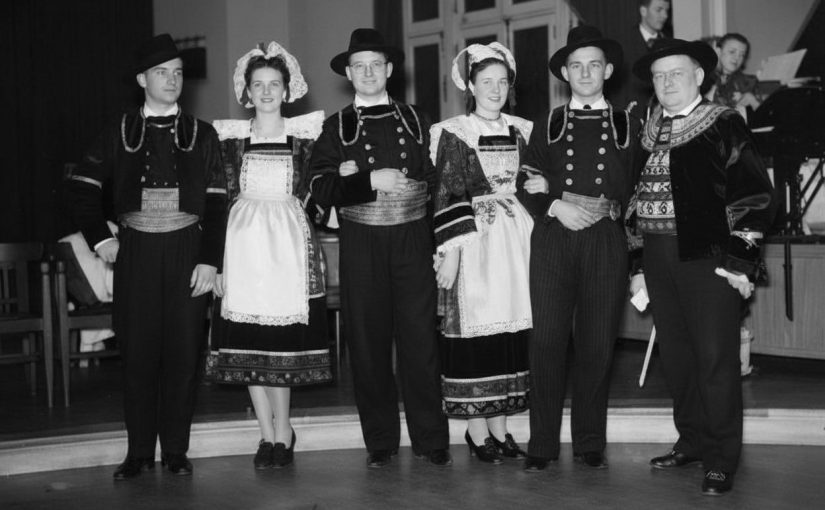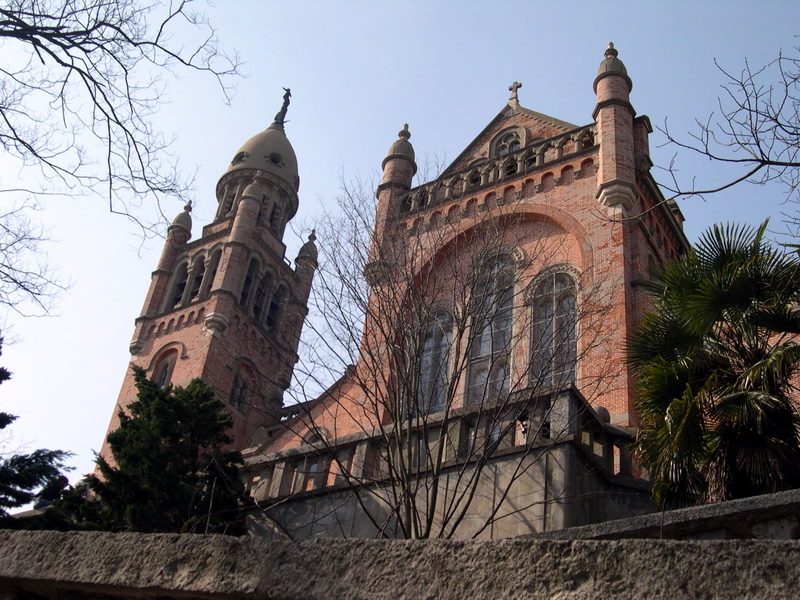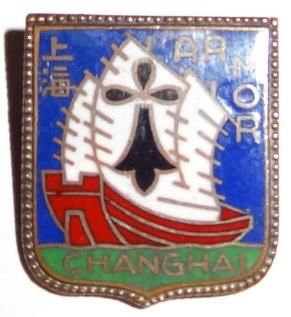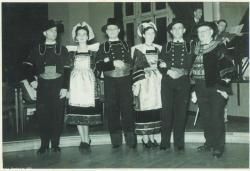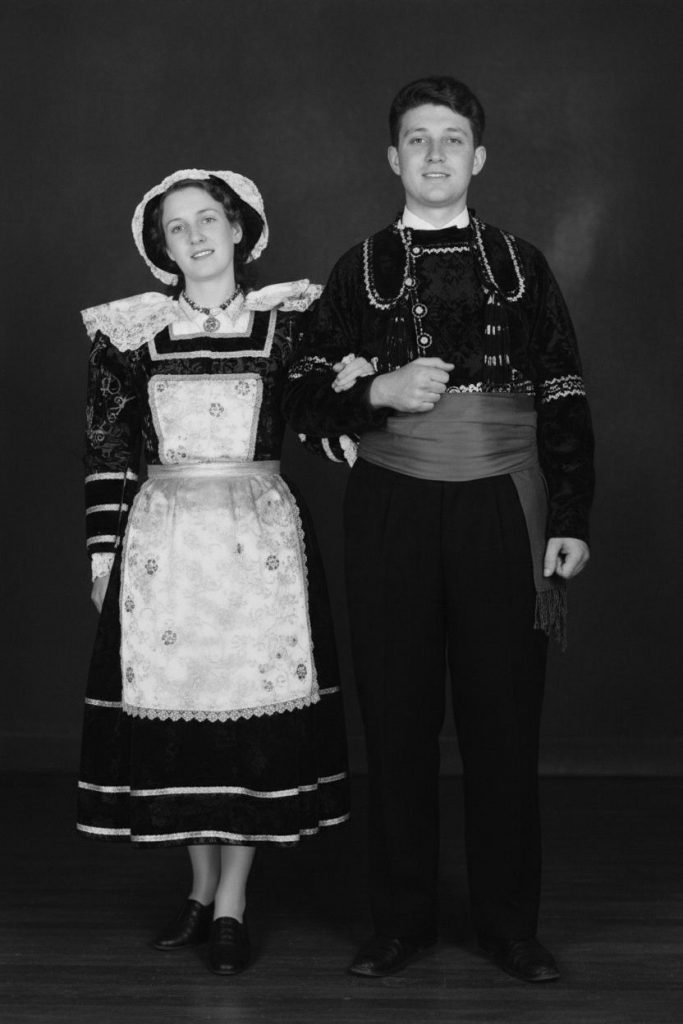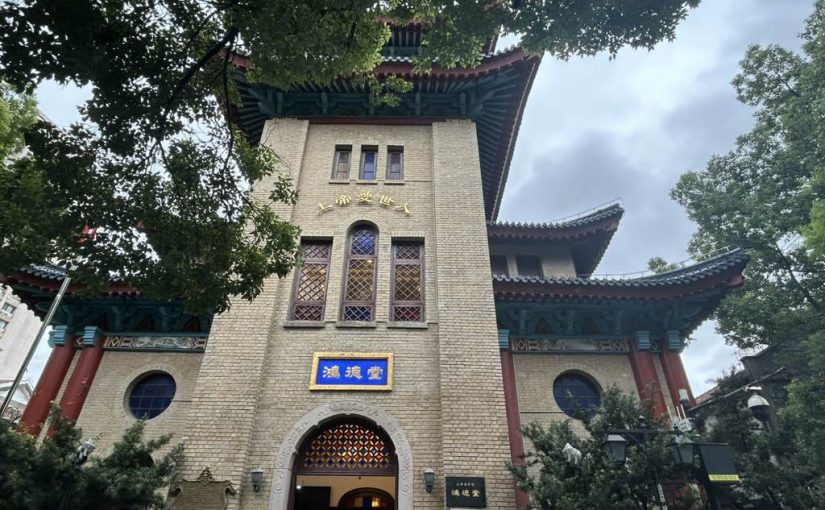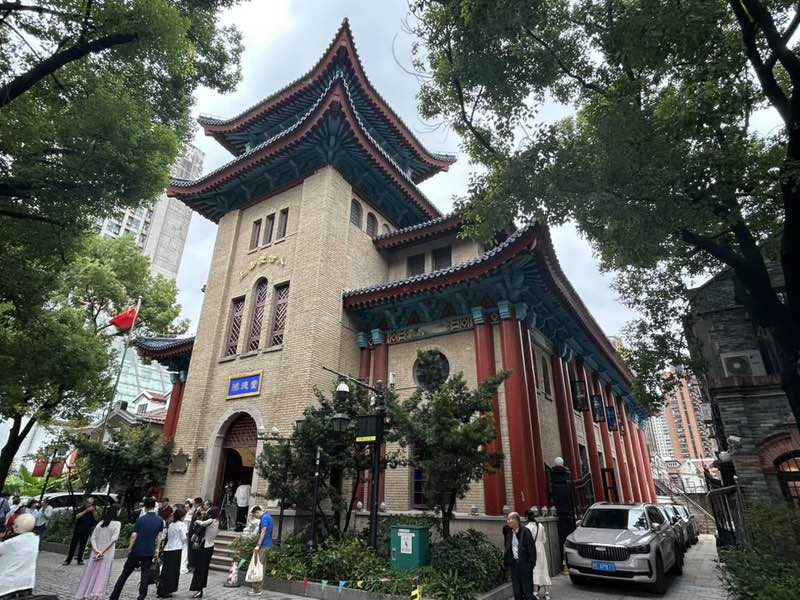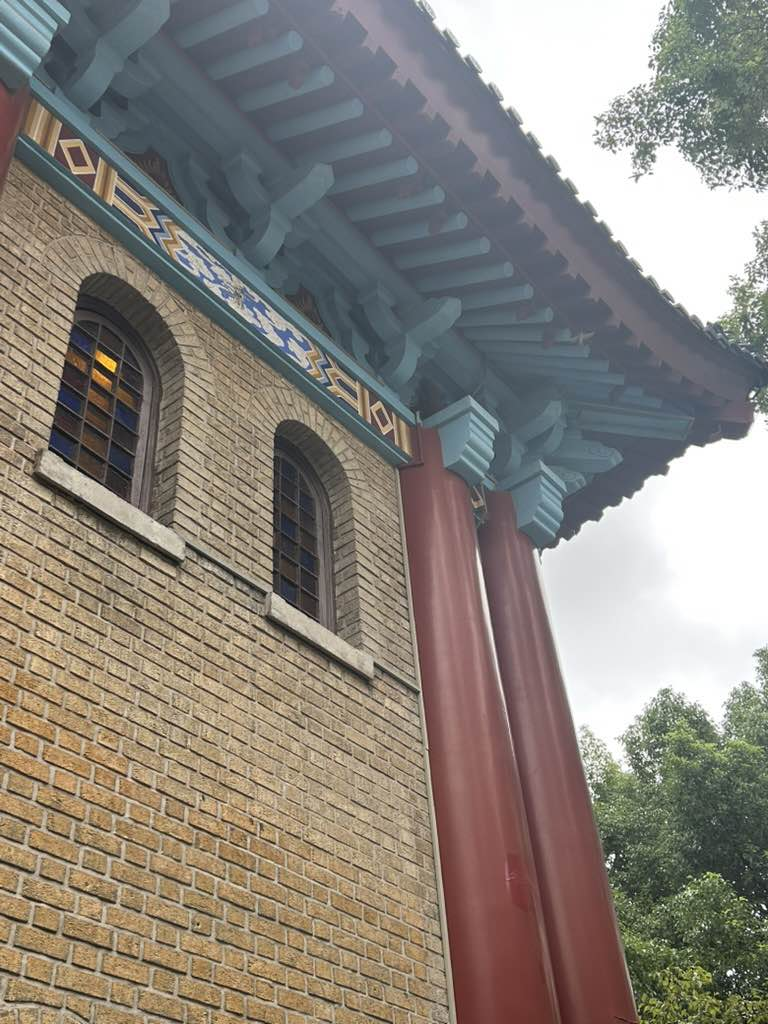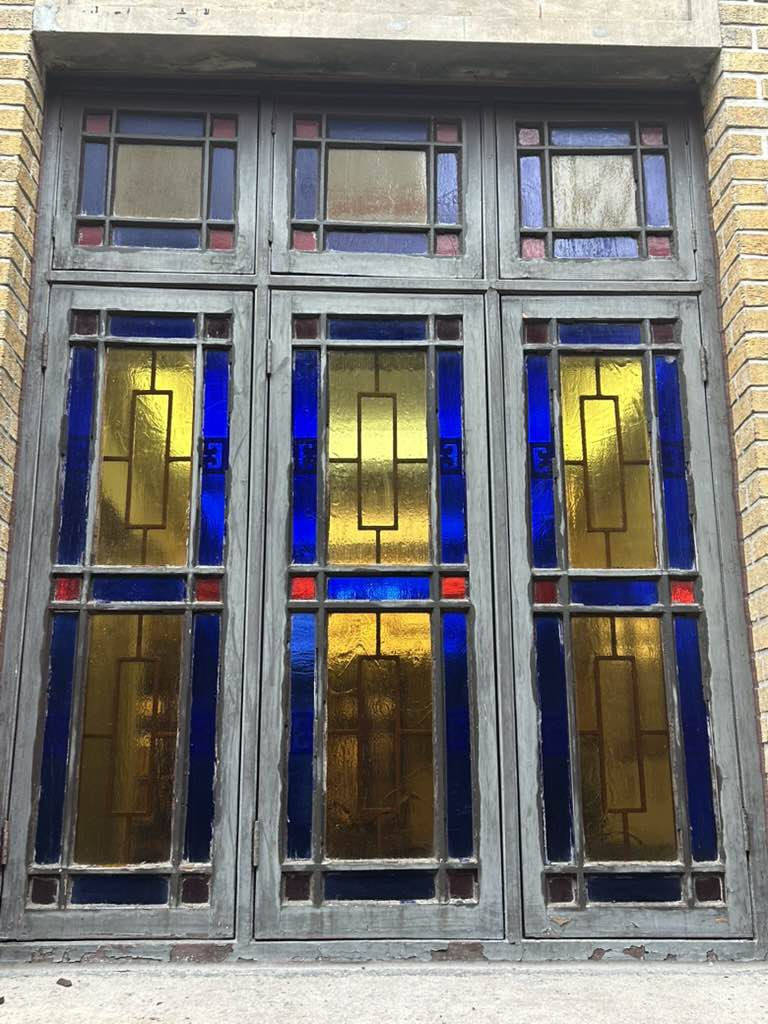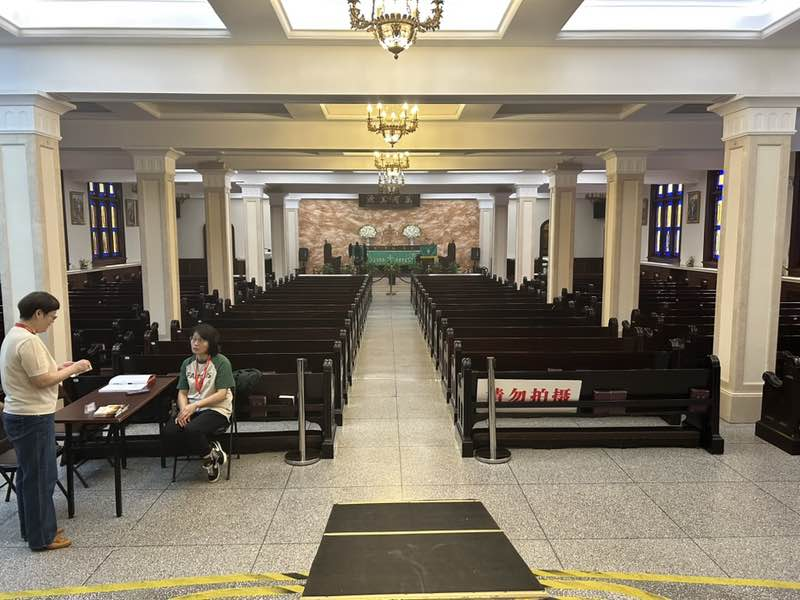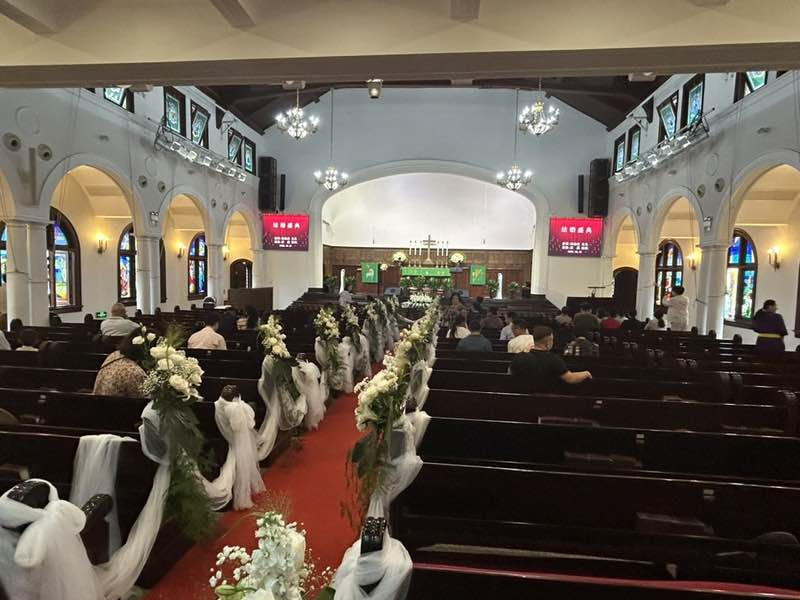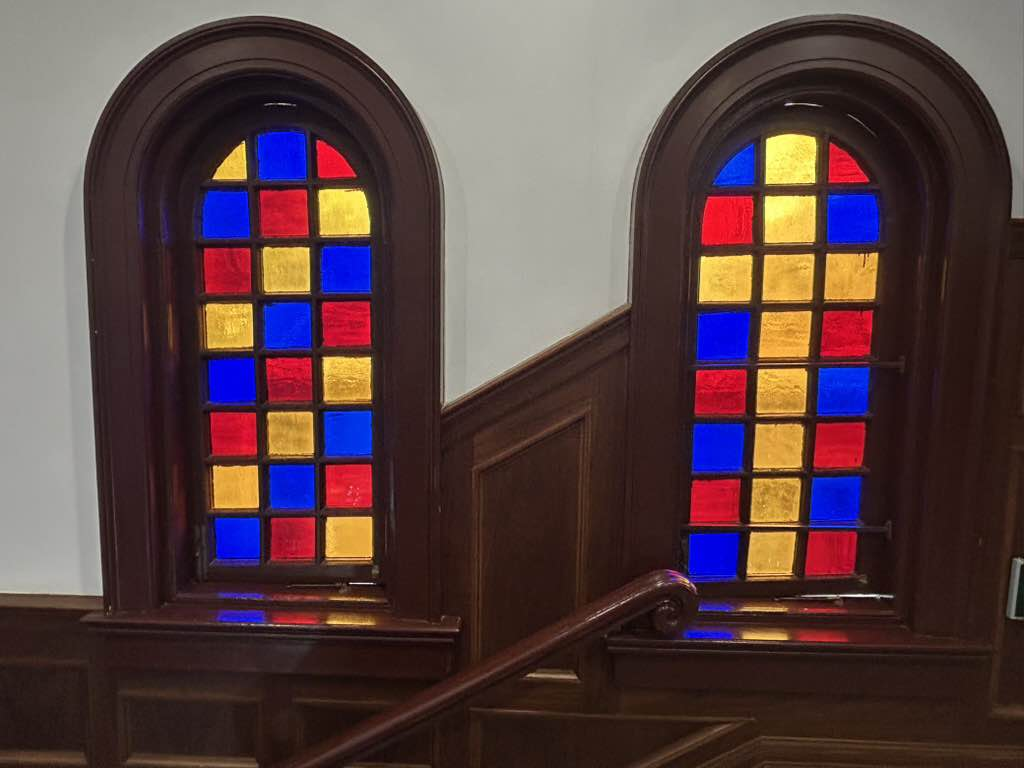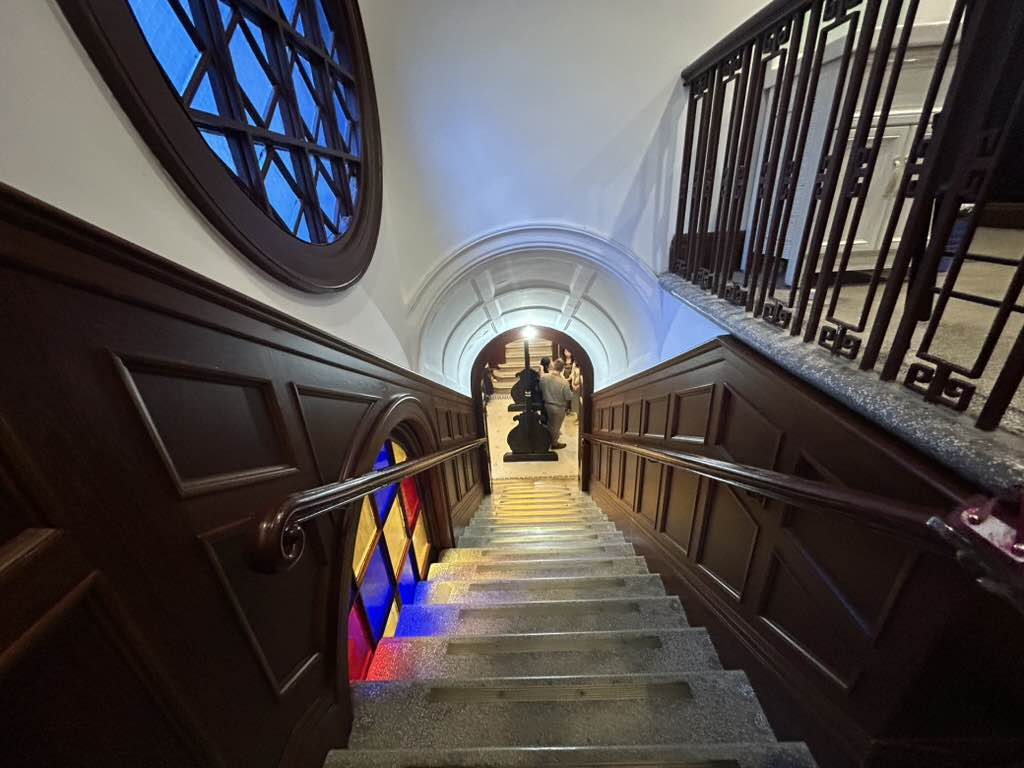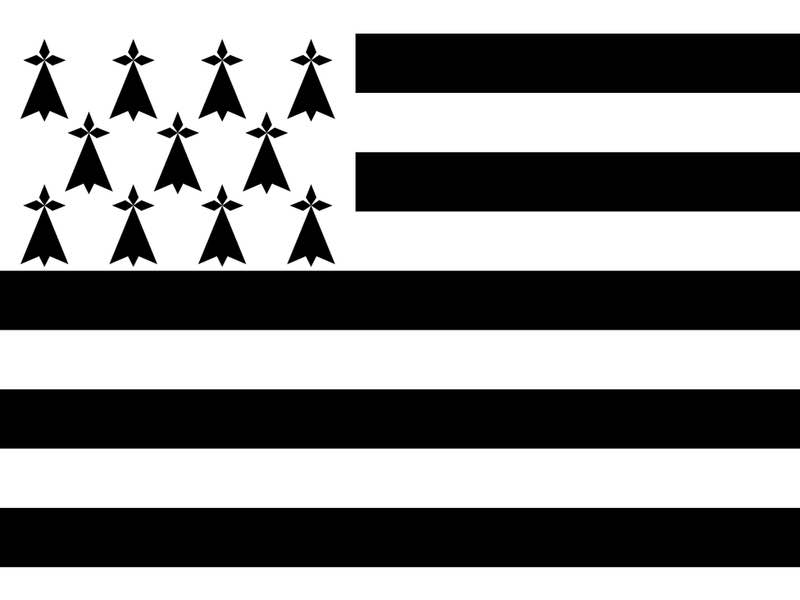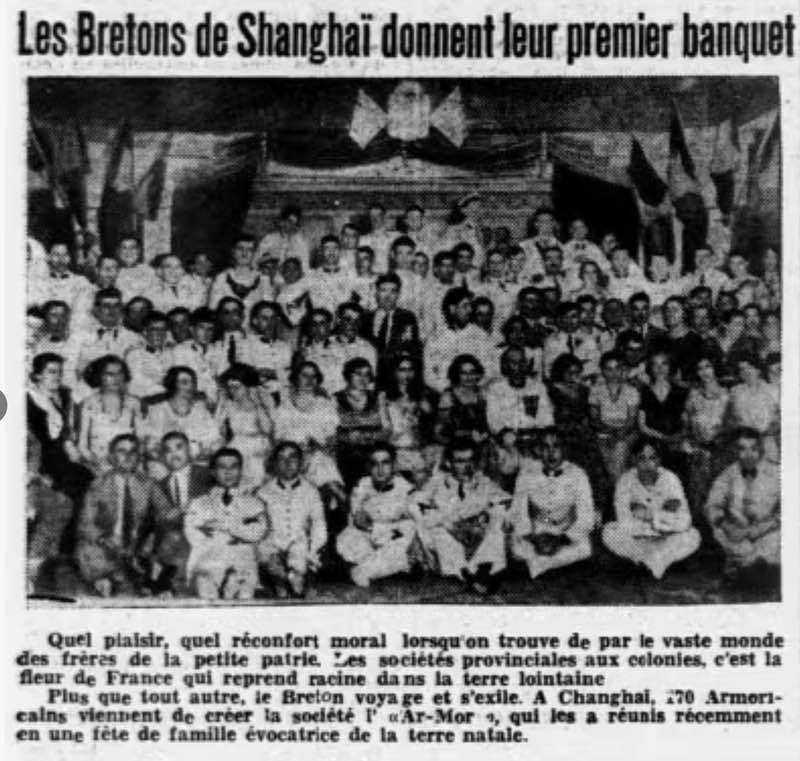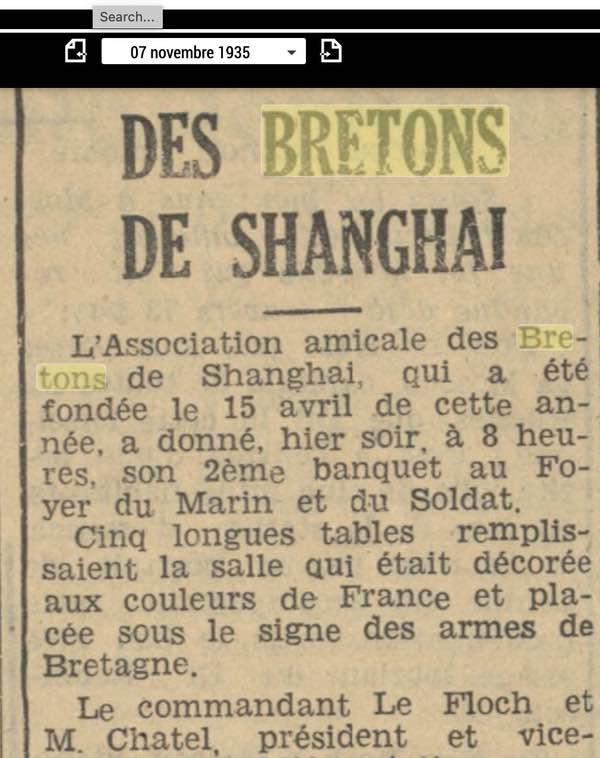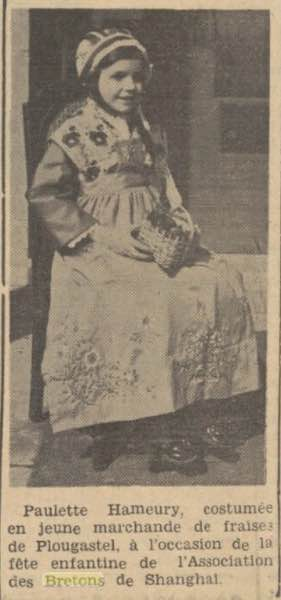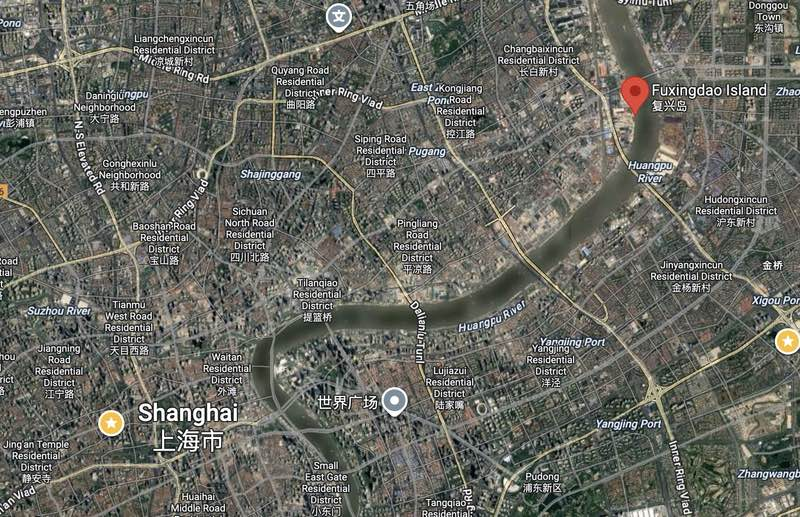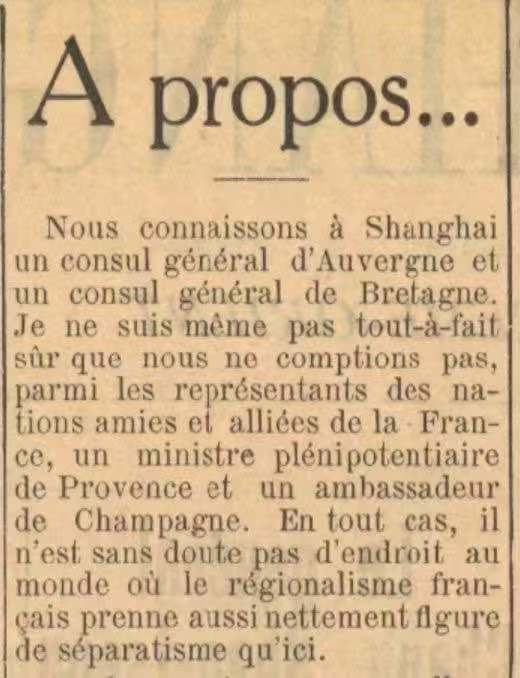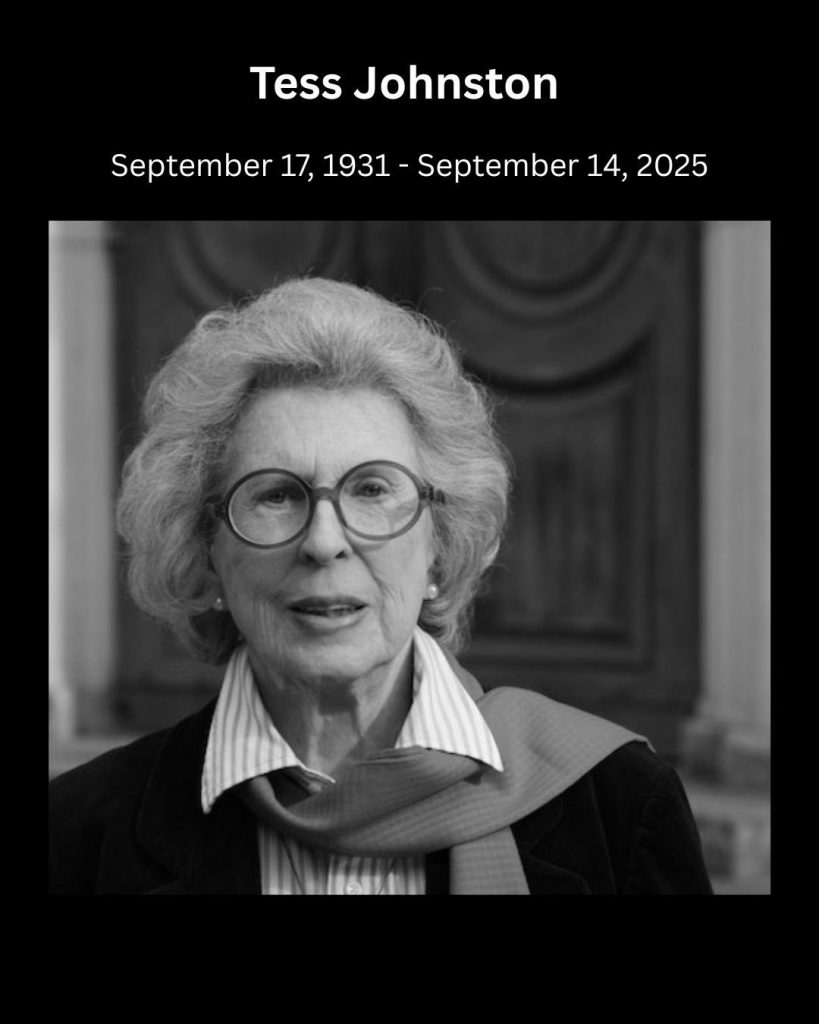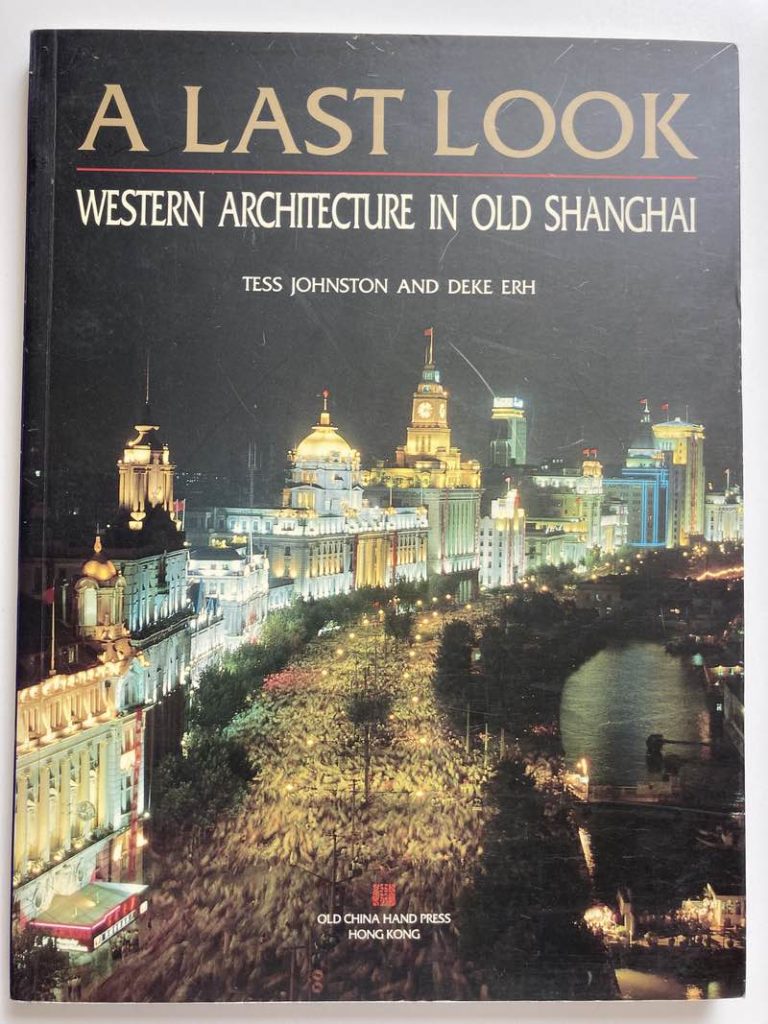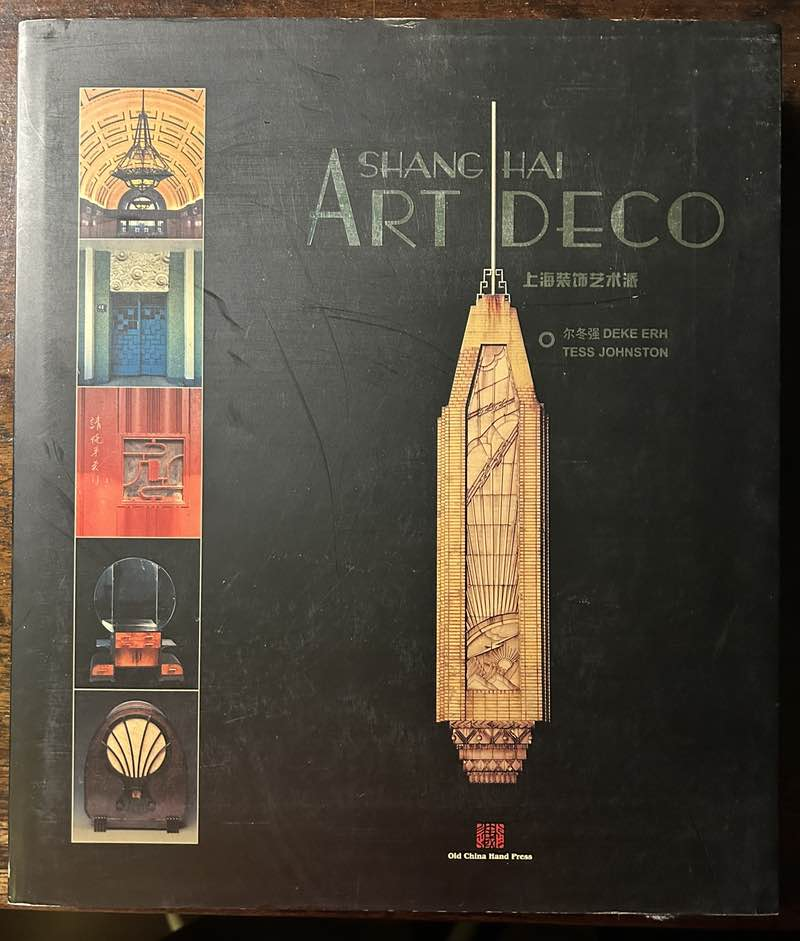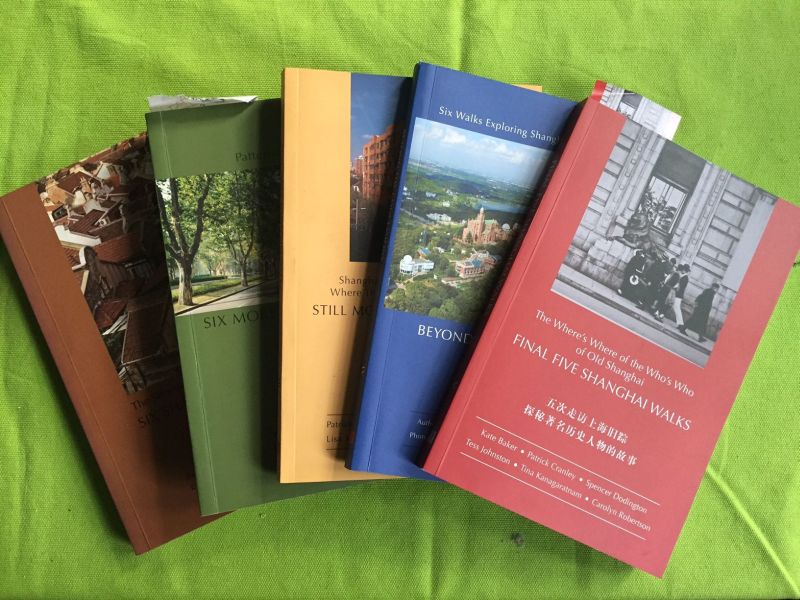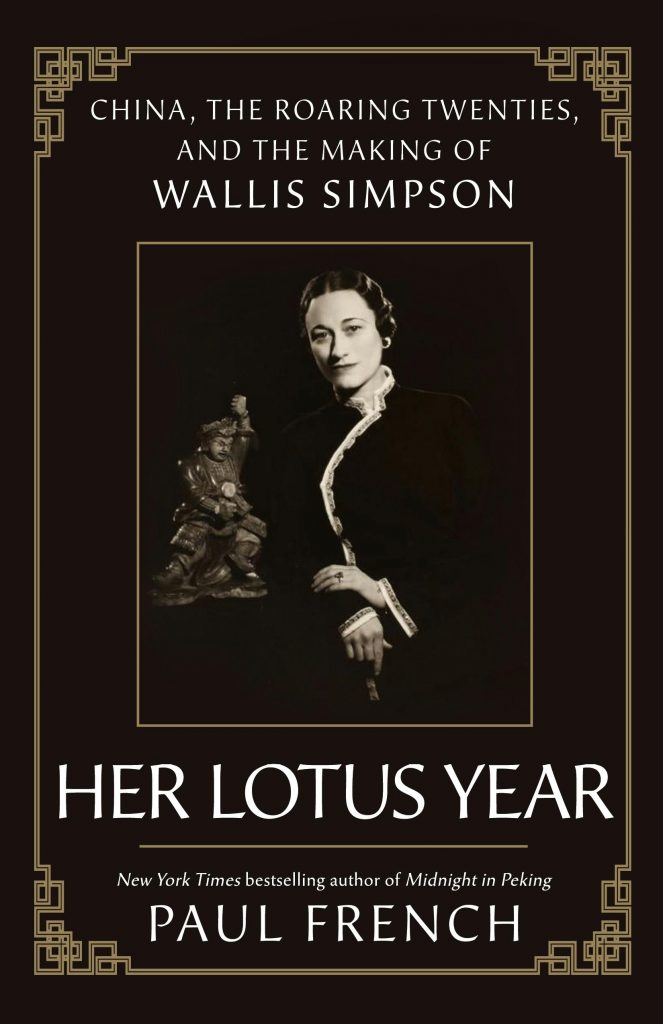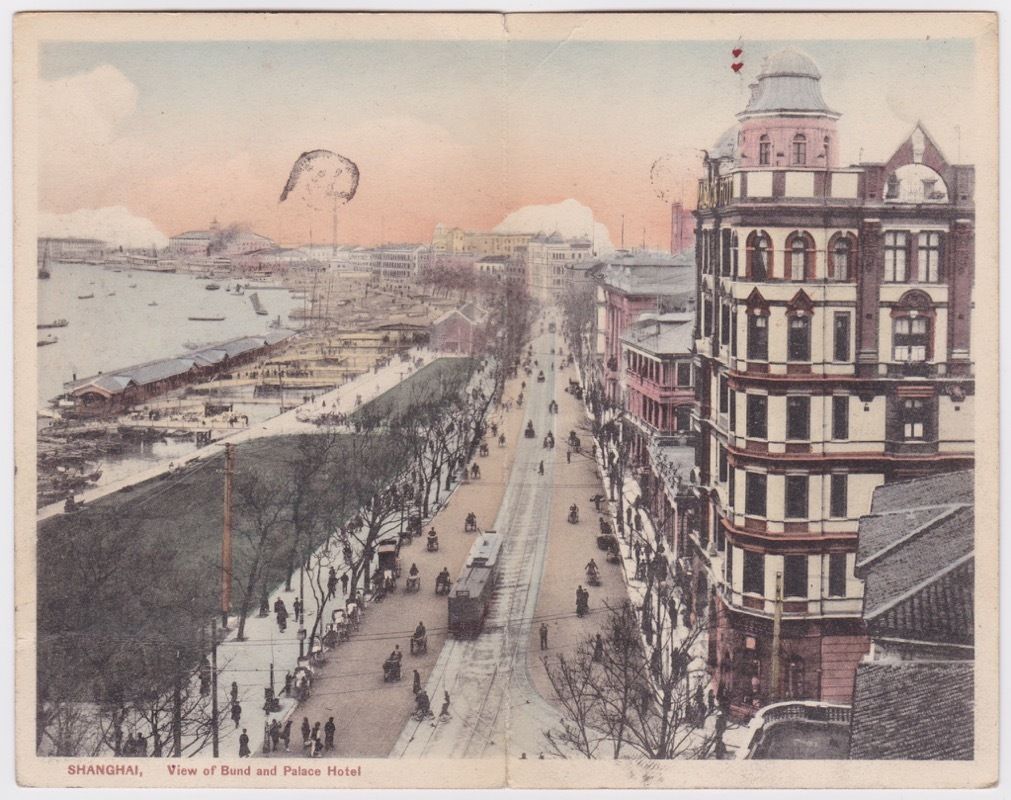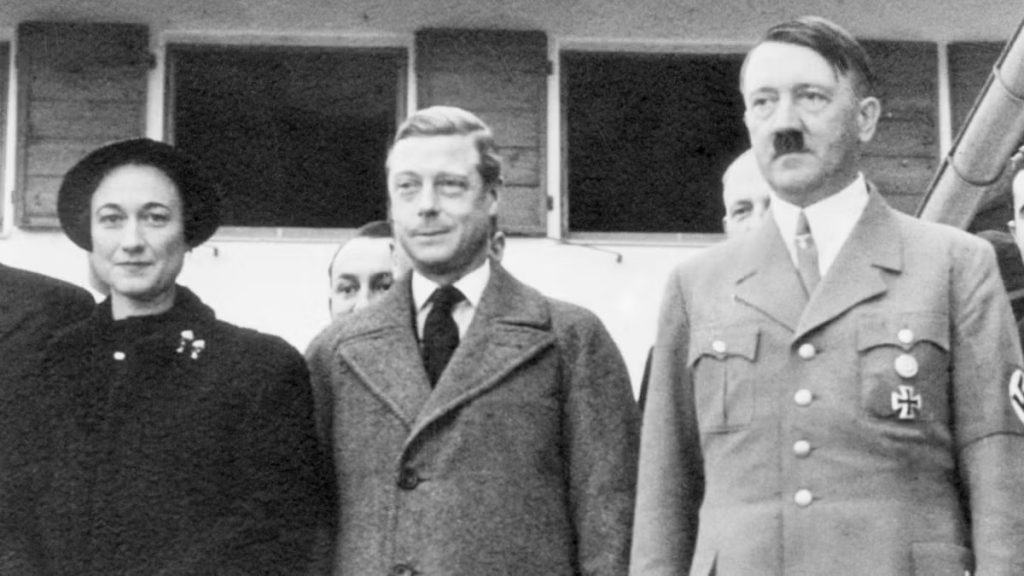I recently wrote a post about Bretons in Shanghai in the late 1930s (see post “Bretons association in Old Shanghai” for more details). Then the current Association of the Bretons in Shanghai got in touch with me and shared some more info.
Most of the information was given by Henry Berthier, born in Shanghai in 1946, who shared some unique pictures taken by his grand mother who took part in the association. He confirmed the existence of the Jardin Bretons for a couple of years. He also mentionned a “Fête des provinces Françaises” July 1938 or 1939 to which Alsace, Normandie, Basque country and Brittany had representations. This matches previous information about French regional associations in Old Shanghai (see post for more information).

In the 1930s, the French community accounted for approximately 2500 people. About 50 Bretons families lived in Shanghai, around 350 people. Thus about 14%% of the French community was from Brittany. Most Bretons spoke Breton language at that time, along with French.
Many were working for the police (about 10 Bretons amongst 70 French officers), the French municipality, the CFTEE, and other private companies. The police and CFTEE often recruited former French sailors which were 90% Bretons. There were also military personnel and priest. Breton Auguste Haouissée (1847-1946) was a Jesuit missionary who became the first catholic bishop of Shanghai in 1928, opening the She Shan Basilica in 1935. Another notable character on the above picture is Auguste Chapelain, the general manager of the Chinese post office.
The Breton association Armor also had it own insignia featuring a chines ship with mention “上海”, “Changhai” and “Armor”.
The association had parties where participants wore the traditionnal Bretons dress, in particular at Christmas. This was mentionned in “Le Journal de Shanghai” article quoted in the “Breton association in Old Shanghai” post.
The Breton association continued to exist until the mid 1940s, when most of the civil servants were brought back to France as the French Concession was given back to China. As mentionned in previous post, a Breton association was formed again in 2004 in Shanghai and is still active today.
For further informations about the Breton association in Old Shanghai, go to post “Bretons association in Old Shanghai“.
Shanghailander articles are published on an irregular basis. To be notified when a new article is posted, subscribe to the newsletter using this link, or follow the Shanghailander Facebook page.
